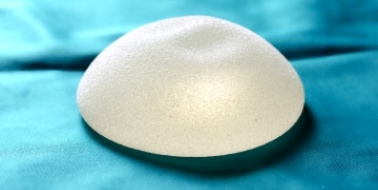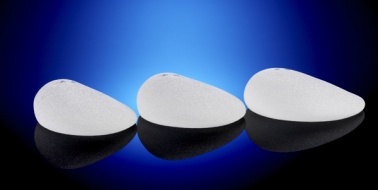There is no doubt that undergoing treatment for cancer and losing the breasts to the disease can be a traumatic and emotionally challenging experience for women. At Jefferson Plastic Surgery, our surgeons hope to alleviate some of that pain by rebuilding the breasts so patients can, finally, move on with their lives. Our Philadelphia breast reconstruction surgeons are skilled and trained in the most effective reconstructive surgery techniques. We are happy to meet with breast reconstruction patients to discuss their options.
Breast Reconstruction Candidates
Breast reconstruction candidates include women who have lost one or both breasts to cancer. Suitable patients have also received a positive cancer prognosis from their oncologist, are in good enough health to tolerate surgery, and do not smoke.
Breast Reconstruction Techniques
Our surgeons will work with your oncologist to determine the best time to perform each step of surgery.
- Tissue expander: In some cases, this first step of treatment may be performed at the same time of the mastectomy. The tissue expander is placed in the breast pocket. At regular intervals, a saline solution is injected into the tissue expander, resulting in a gradual stretching of the pocket and the skin. When the tissue expansion treatment is complete, implants or the patient's own tissue can be transferred to the breast pocket.
- Breast implants: Saline or silicone breast implants can be placed in the pocket to augment the size and shape of the breasts. Breast implants are a good option because they offer our surgeons more control in terms of the final breast size and shape.
- TRAM flap: In the TRAM flap technique, fat, tissue, muscle, and skin is removed from the abdominal region and transferred to the breasts. The breast mound is reshaped to create the desired proportions. In this approach, the flap may be completely detached and moved to the breast pocket; or the flap will stay connected to its original blood supply source, and moved up to the breast through the chest wall.
- Latissimus dorsi flap: In the latissimus dorsi technique, the flap of fat, tissue, muscle, and skin from the back remains attached to its original blood supply source; the flap is pulled away from the back and used to create a new breast mound.
- DIEP flap: When it comes to microvascular surgical procedures to reconstruct the breasts, the DIEP flap approach is now the gold standard. In the DIEP flap procedure, only fat and tissue are transferred from the abdomen. The muscles remain intact, reducing the severity of side effects after surgery and the incidence of post-surgical complications. During surgery, the flap of skin is moved to the breast, and, using microvascular surgery, the blood vessels in the abdominal flap are matched up and connected to the supplying blood vessels in the chest.
Breast Reconstruction Procedure
The steps that are performed during the breast reconstruction procedure will vary based on the surgical techniques that are employed. After the tissue expansion stage of treatment, the procedure will involve:
- Pen markings on the breasts and harvest area to indicate where the incisions will be placed
- The use of general anesthesia to sedate the patient
- The application of an anti-bacterial solution to the breasts and harvest site
- The creation of the flap
- Tunneling of the flap or detachment of the flap from the harvest site and reattachment to the chest
- Reshaping of the breast mound to produce a natural breast appearance
- The flap transfer and reshaping processes are repeated on the other breast
- The breasts are evaluated for symmetry; adjustments are made to make the breasts look even
- Incision are closed
- Bandages are applied to the breasts and harvest site
Breast Reconstruction Recovery
During breast reconstruction recovery, a drain may be placed to draw excess fluid and blood away from the incision site. If placed, the drains are removed after a few days. While drains are in place, patients should avoid or exercise caution when showering. Talk to our surgeons for showering instructions after breast reconstruction.
After surgery, patients should follow these breast reconstruction post-surgical instructions:
- Take one to two weeks off of work
- Stay in a resting position, with your head elevated, for two or three days after surgery
- Take pain medication on schedule
- Use an ice compress, placed above the bandages
- Wear a soft compression bra for several weeks after surgery
- Take it easy for two weeks after surgery
- Do not engage in strenuous activity for four to six weeks
Breast Reconstruction Side Effects
After breast reconstruction surgery, it is common for patients to experience these side effects:
- Pain
- Swelling
- Bruising
- Itchiness or loss of feeling at the incision site
Breast Reconstruction Risks
Though rare, the following complications are associated with breast reconstruction:
General Complications
- Bleeding
- Infection
- Poor wound healing
- Allergy to anesthesia, pain medication, or bandages
- Breast asymmetry
- Excessive scarring
Flap Procedure Complications
- Loss or reduced sensation for the breasts and harvesting site
- Blood clots
- Vascular problems
- Poor blood flow to the breast
- Flap relocation failure
- Reduction in abdominal strength (TRAM flap complication)
- Weakness in the arm, shoulder, or back (Latissimus dorsi flap complication)
Implant Complications
- Formation of scar tissue around the implant
- Implant deflation
- Implant displacement
- Implant rippling
Breast Reconstruction Results
Breast reconstruction surgery offers good results for patients that have lost one or both breasts to cancer. Patients will notice an immediate difference in their breast contour after surgery. Optimal results are seen by three months to one year after surgery.
Philadelphia Breast Reconstruction Consultations
We invite Philadelphia patients to schedule a breast reconstruction consultation at Jefferson Plastic Surgery.



